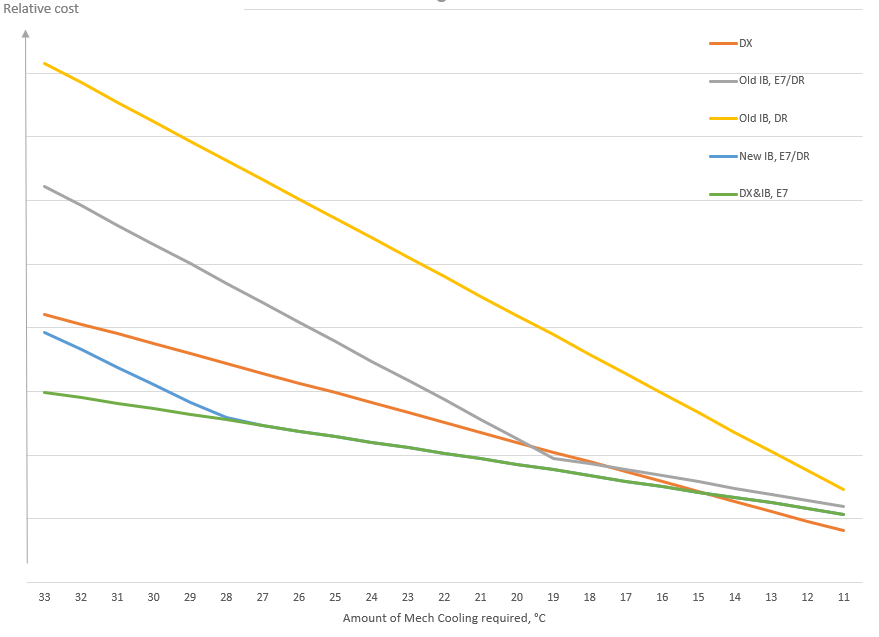- Home
- Knowledge library
- How do the options compare in terms of energy efficiency?
How do the options compare in terms of energy efficiency?
A look at the different systems and the effect of varying levels of pre-cooling and different price tariffs on energy efficiency and running costs.
Back to: Energy efficient refrigeration for dairy farms
The inherent design of a milk cooling system is the first consideration of efficiency. In general terms, it is most efficient to create cooling at the point of use because insulation losses during storage are eliminated; efficiency suffers whenever energy is drawn at night and stored for use by day, but this is often done for reasons of cost, as night rate electricity is cheaper. The typical ratio between night and day tariffs has weakened in recent years, from 1:2 to around 1:1.5, thereby weakening the case for night storage systems.
In Table 1, Cooling effectiveness is given as litres of milk cooled from 35°C to 4°C per kWh of electricity used.
Table 1. Efficiency comparison of different systems
| System | Cooling effectiveness (litres of milk cooled per kWh) |
|---|---|
|
Older ice bank tank (screw compressor, less insulation, |
45 |
|
Newer ice bank tank (scroll compressor, more insulation, advanced refrigerant) |
50 |
|
Direct expansion tank with ice builder |
75 |
Pre-cooled vs not pre-cooled
A further comparison between the options includes the effect of night rate electricity, and ranks the options in increasing order of running cost under the two scenarios, pre-cooled and not pre-cooled:
Table 2. Comparison of running costs
| Cooling from | 15°C to 4°C | 37°C to 4°C |
|---|---|---|
|
Cheapest ^
v Most expensive |
Direct expansion |
Direct expansion and ice builder |
|
New ice bank, using night rate |
New ice bank, using night rate |
|
|
Direct expansion and ice bank |
Direct expansion |
|
|
Older ice bank, using night rate |
Older ice bank, using night rate |
|
|
Older ice bank, no night rate |
Older ice bank, no night rate |
Different levels of pre-cooling
In Figure 1, a further comparison of the options demonstrates the effect of electrical tariffs at varying levels of pre-cooling. The more cooling which remains to be done mechanically, the higher the cost, and in the case of an ice bank (IB), the greater the amount of day rate (DR) electricity involved. Use of night rate (shown as E7) can be seen from the lower gradient; direct expansion systems (DX) are more efficient but consume day rate electricity, so their cost falls somewhere between those of the storage systems on the two tariffs.

Figure 1: Comparison of options at varying levels of pre-cooling.

